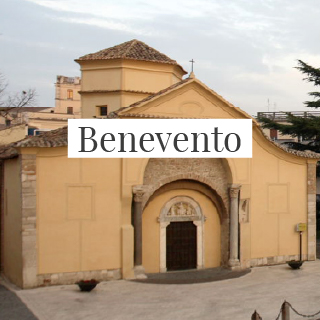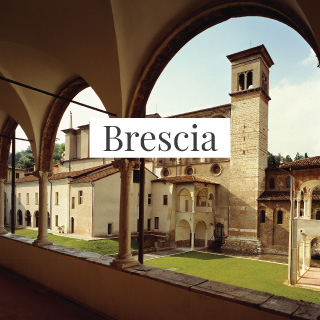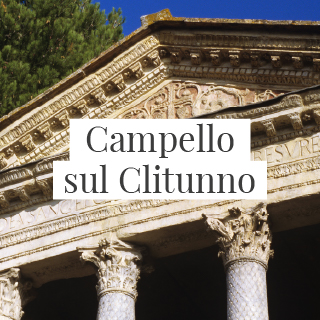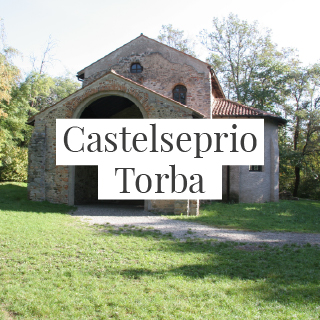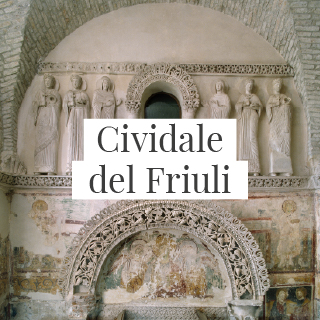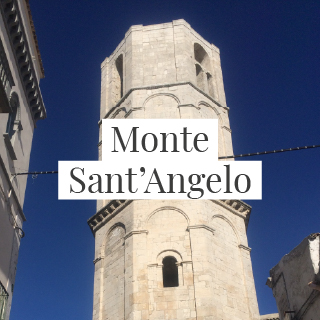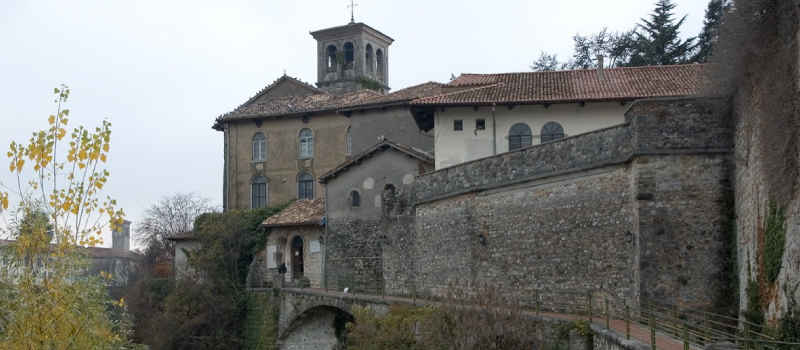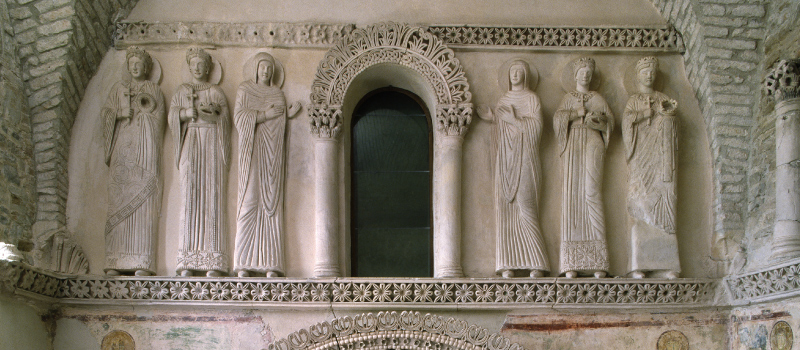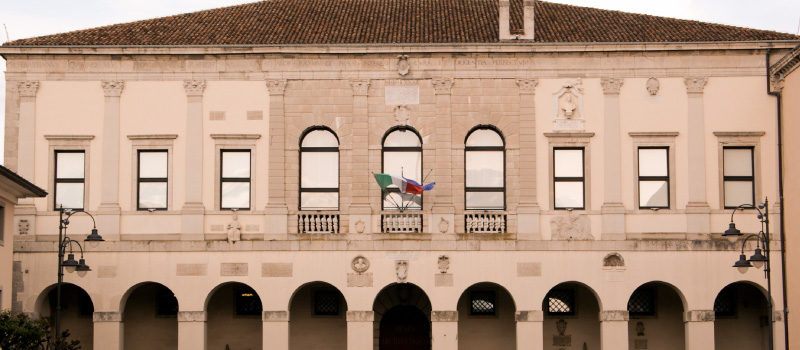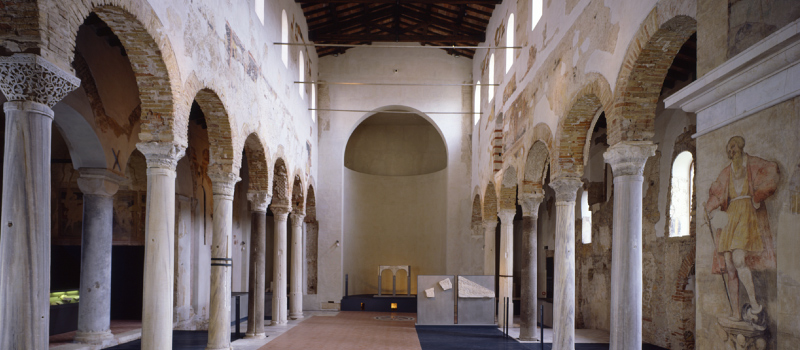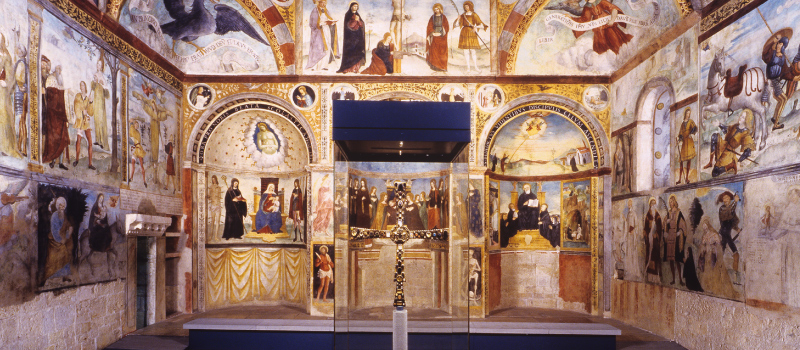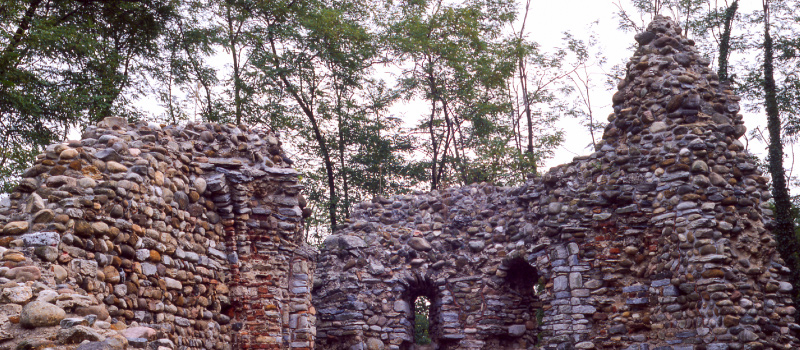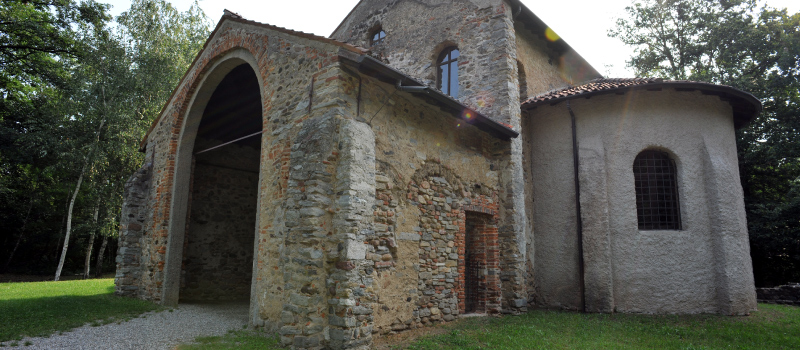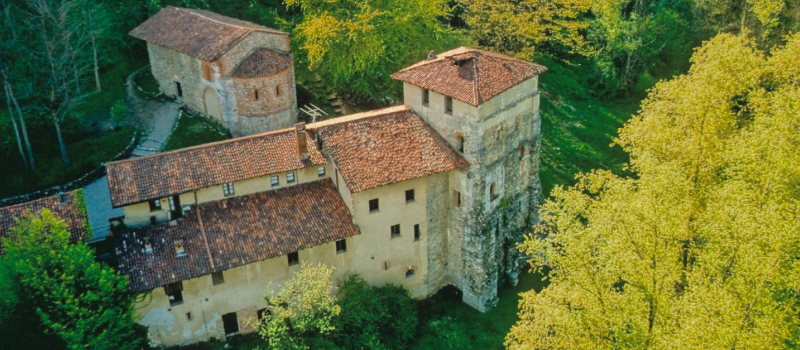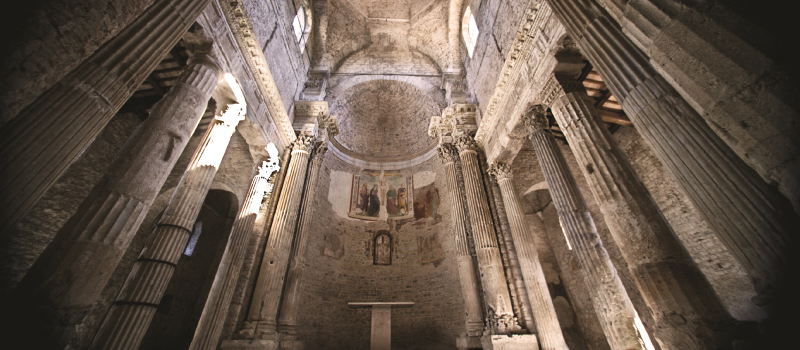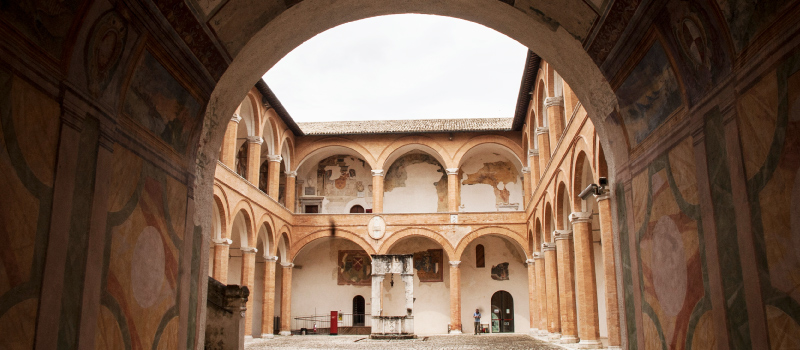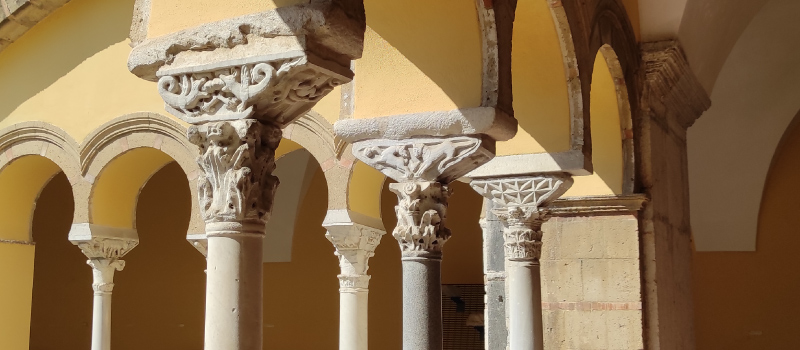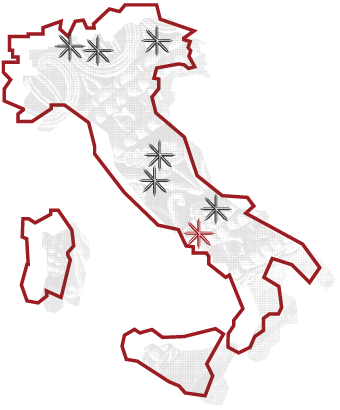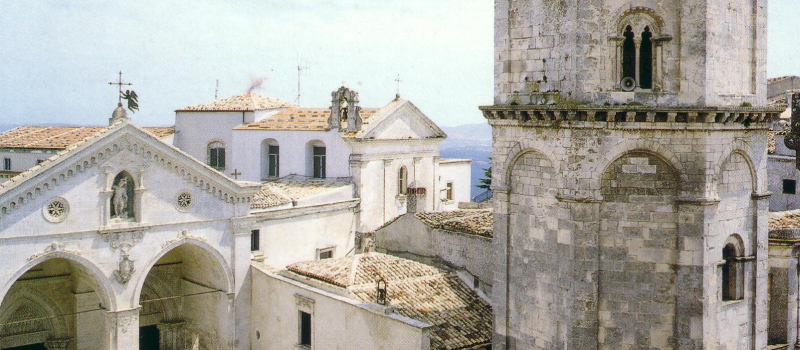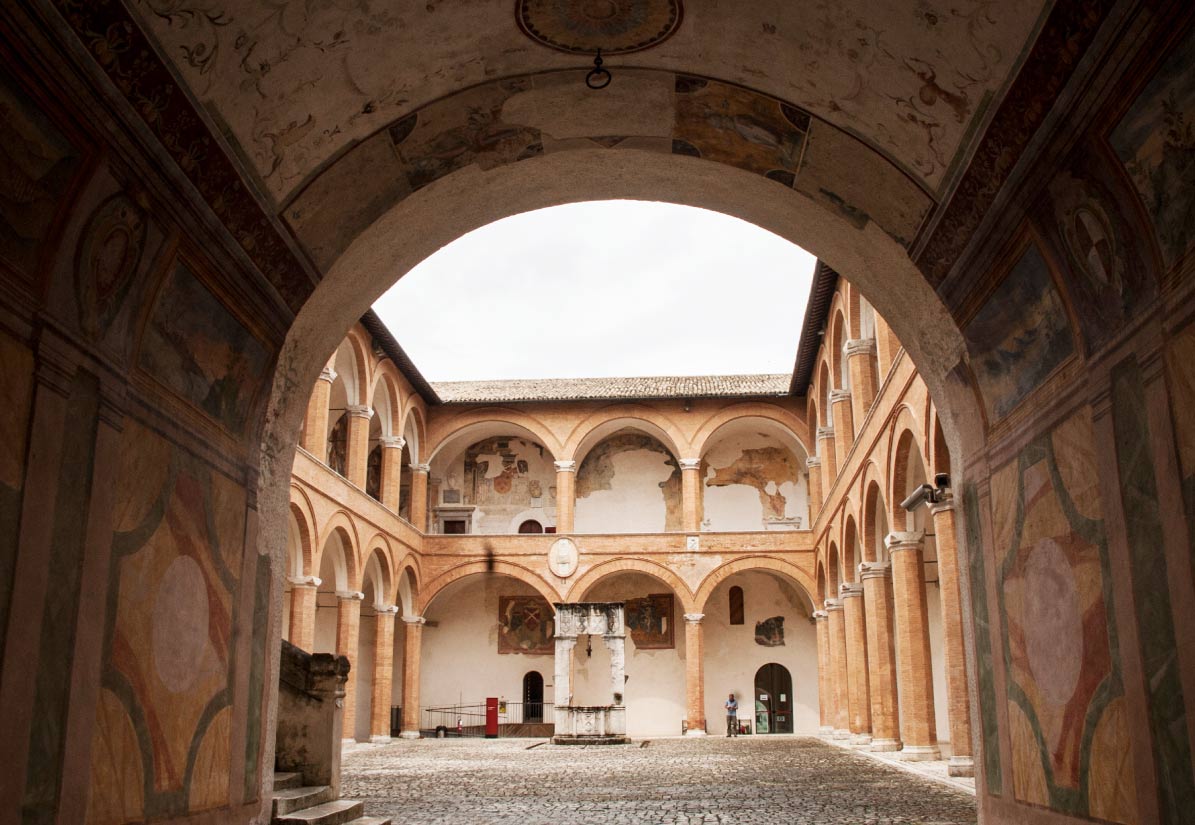The National Duchy Museum
The National Duchy Museum
The museum is housed in the Rocca Albornoz castle, in the upper part of Spoleto’s historic centre.
The museum consists of two areas next to the Courtyard of Honour, one on the ground floor and the other on the first floor, divided into fifteen rooms. It tells the story of the Spoleto area from the 4th to the 15th century.
The section displaying grave goods from the burial ground in Nocera Umbra is of particular importance, both for their artistic value and for the information they provide about Lombard social organization.
The Rocca Albornoz
Spoleto Castle, the Rocca Albornoz, is the main bulwark of the defensive system devised by the Spanish cardinal Egidio Albornoz in central Italy to strengthen the Church’s authority prior to the transfer of the papal seat from Avignon to Rome.
Matteo Gattapone planned this mighty construction between 1362 and 1367. Over time, the popes and their governors gave the Rocca the character of a residence, but after the transfer of the Apostolic Palace to within the city in 1764, it was reduced to providing accommodation for troops, and from 1817 became a prison.
Acquired by the newborn Italian state in 1860, the castle maintained its penitentiary function until 1982, when it passed under the protection of the Ministry of Cultural and Environmental Heritage. The National Duchy Museum was inaugurated inside it in 2007, to recount the historical, political and cultural development of the Duchy of Spoleto.
The huge territory centred on Spoleto was named the Duchy of Spoleto in the 6th century, when the Lombards established this political and administrative form of government, and the denomination continued to identify the area until after the 17th century.
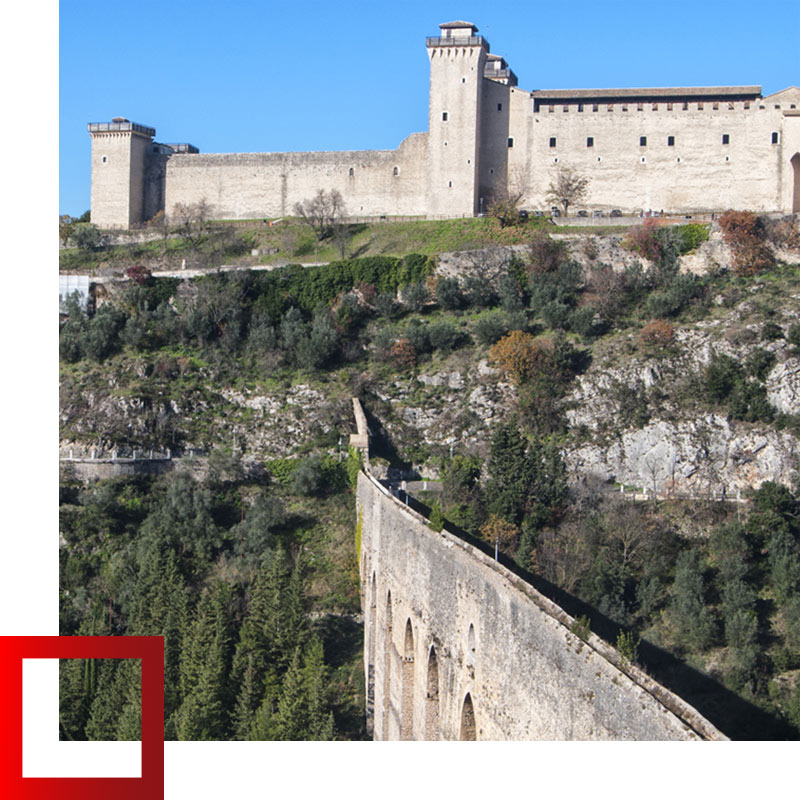
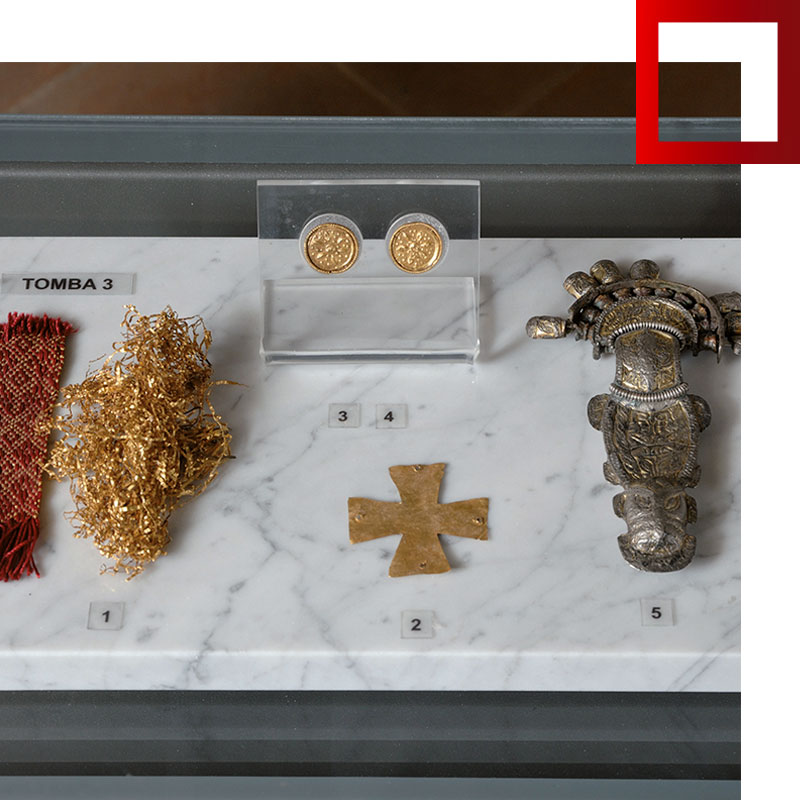
The collection
The various exhibits, arranged in chronological sequence from the 4th to 15th centuries AD, illustrate themes such as the Christian community in the zone, with 4th – 5th century finds from burial grounds and religious buildings, the phenomenon of monasticism which was spread throughout the Spoleto area, the social organization of the Lombard Duchy of Spoleto, the Carolingian-Ottonian period, the time from the empire to the papacy, the epoch of the communes and the fifteenth century.
Of particular importance is the Lombard section, which displays some of the most precious grave goods from the Nocera Umbra cemetery, one of the most important in Italy. visitors can also admire 6th century floor mosaics and sculptural decorations, and fragments of sculpture that come from Lombard and Carolingian-Ottonian era places of worship. There is also a rich pictorial section, documenting the Romanesque period, as well as 15th century Renaissance styles.
Visit
Info and contacts
The National Duchy Museum
Piazza Bernardino Campello, 1, 06049 Spoleto PG
Phone 0743 223055
Mail. drm-umb.muducatospoleto@cultura.gov.it
Website
VUOTO
Tickets
Full price €7.50
Reduced € 2.00 (between 18 and 25 years)
Free for EU citizens under 18, without prejudice to the concessions provided for by the entry regulation to Italian places of culture.
Opening Times
From October to March
From Monday to Sunday 9:30 – 18:30
From April to September
From Monday to Sunday 9:30 – 19.20
